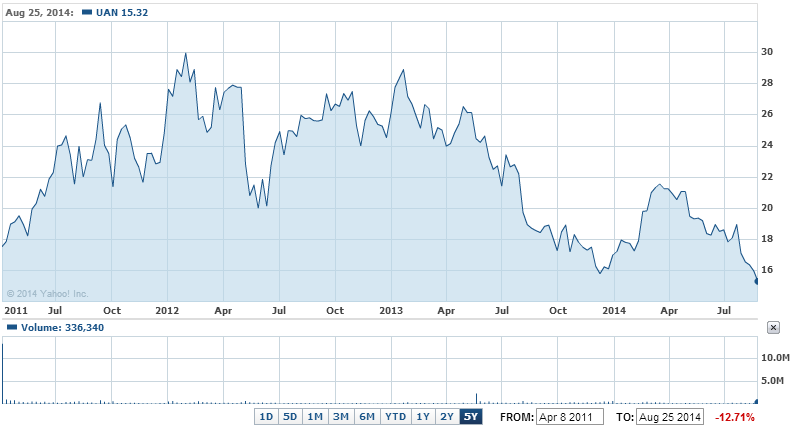
With the exception of the few master limited partnerships (MLPs) that are completely outside the oil and gas industry, most have at least some sensitivity to oil and gas prices. For the most part, the midstream and upstream MLPs have various strategies in place to keep distributions stable and, ideally, growing over time. Midstream partnerships achieve this stability by charging mostly fixed fees for their services. Upstream partnerships have more direct exposure, but they generally hedge against falling commodity prices in order to protect revenue and profits.
But there are MLPs that allow themselves to be more exposed to commodity prices, and as a result many of them employ a variable distribution policy. When business is good, they distribute more cash to investors. But when business is bad, distributions can be cut sharply from one quarter to the next.
Most of these variable distribution MLPs do not have incentive distribution rights (IDRs) that grant the general partner a greater percentage of the income above a level set by the partnership agreement. This increases the amount of distributable cash flow (DCF) available for distributions to investors.
These variable distribution MLPs are for the most part downstream producers in either the oil refining sector or the fertilizer production business. The following table to my knowledge covers the full listing of variable distribution MLPs, sorted in descending order of their 12-month total returns:

Conventional valuation metrics for evaluating MLPs should be used with care when looking at the variable distribution MLPs. Yields, for instance, can fluctuate wildly. A refiner coming off of a great quarter might make an unusually high distribution, but if future market conditions are expected to be poor then the unit price may be driven down. A great previous quarter distribution combined with a poor near-term outlook is why you will occasionally see variable distribution MLPs with yields in the 15-20% range. But these yields are generally misleading, as a distribution cut often follows. So don't ever buy a variable distribution MLP on the basis of an astronomical yield.
So what kind of investor should consider a variable distribution MLP, and when is the best time to buy one? Variable distribution MLPs aren't suitable for conservative investors seeking stable income. They are more suitable for short-term investors who are willing to buy during the down cycle and then sell at the first sign of trouble.
Few of these MLPs were in existence before 2011, so it's hard to gauge how a buy and hold strategy might perform, but the following chart of CVR Partners (NYSE: UAN) since its IPO isn't encouraging:

Since the 2011 IPO the unit price is down by 12.7%, but UAN has also distributed $6.07 to investors since going public. To understand the volatile nature of these distributions, consider that the partnership's distribution following Q3 2012 was $0.50/unit, but then the distributions in the next two quarters were $0.19/unit and $0.61/unit. The most recent distribution following Q2 2014 was $0.33/unit.
Also notice in the chart the volatility over time. The peaks and valleys represent the cyclical nature of the fertilizer business. It is important that investors understand the reasons behind the cyclicality. In the fertilizer business, the cycles are driven by the relationship between natural gas prices and fertilizer demand. (With refiners it's the relationship between crude oil and finished product prices.) Natural gas prices have crept up this year relative to last year, and a bumper corn crop and flat ethanol demand have created expectations of softening fertilizer demand, and therefore lower margins and distributions. That is reflected in the 12-month performance of the bottom three MLPs in the table above, all three of which produce fertilizer.
Of course to be successful in timing your entrances and exits in the variable distribution MLPs, you need to buy in during the down cycle and cash out when things look great. Right now the fertilizer business is definitely in the down part of the cycle. There is a risk of investing too early and seeing the sector fall a bit more (and higher natural gas prices this winter are a risk), but history argues that the fertilizer MLPs will bounce back.
As an investor, I am a bargain hunter. Mostly I seek out long-term investments, but at times the cyclical MLPs can become too attractive to pass up. Right now, for those interested in variable distribution MLPs, the fertilizer category is one worth watching.
This article originally appeared in the MLP Investing Insider column. Never miss an issue. Sign up to receive MLP Investing Insider by email.


0 comments:
Post a Comment